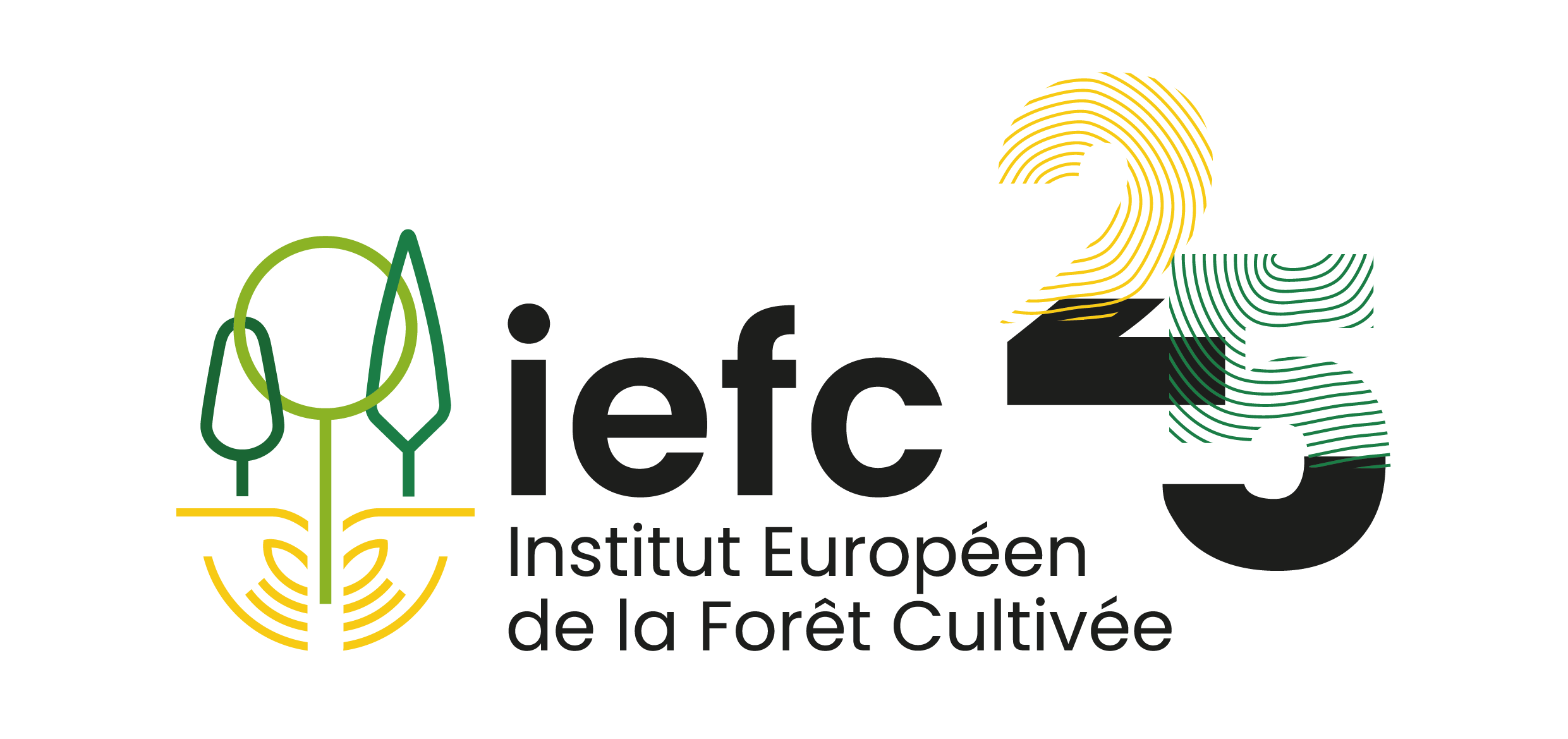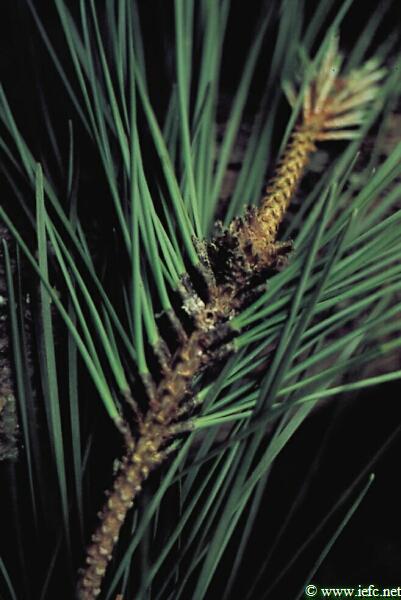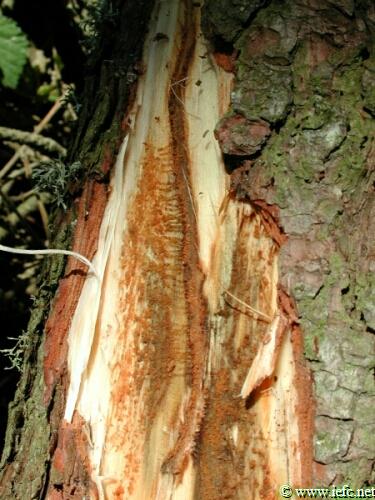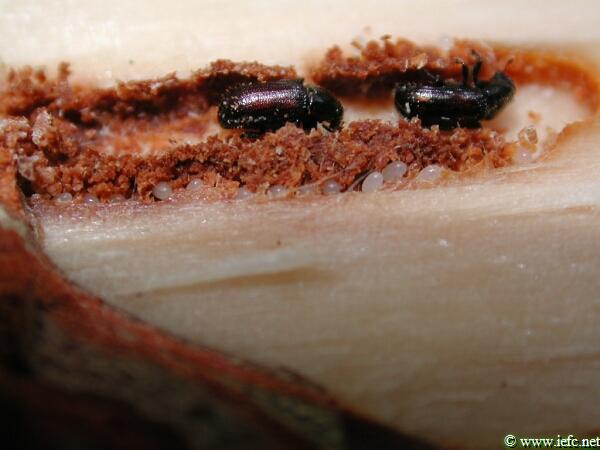Pine shoot beetle
Tomicus piniperda (L.) (Coleoptera, Scolytidae)
Synonyms: Blastophagus piniperda, Dermestes piniperda, Myelophilus piniperda.
Host tree
Pine (Pinus), fir (Abies), spruce (Picea) and larch (Larix) species.
Identification
- Tree top discoloured and rarefied.
- Yellow discoloration and curving of shoots as a result of adult beetles feeding inside the shoots (between April and February. Presence of pitch tubes on the shoots with resin nuts. In the shoot axis presence of a feeding gallery, sometimes with the beetle still inside. Affected shoots can fall and be found lying on the ground (Photo 1).
- Presence of pitch tubes and sawdust around bark holes on the trunk (Photo 2).
- Presence of galleries under the bark (one longitudinal gallery (2-2,5 mm wide and 8-12 cm long) and several larval side galleries (Photo 3).
- In the gallery system eggs, larvae, pupae and (immature) adults can be present (Photo 4).
- Adult beetles are black or bicoloured (reddish elytra and black pronotum) and 3-5 mm long.
Damage
- Breeding of beetles is often fatal for weakened trees.
- At high population levels massive attacks can lead to the death of healthy trees.
- Beetles transmit bleu-stain fungi.
- Growth reduction when many shoots are tunnelled by adult beetles. Shoot damage also reduces value of Christmas trees.
Biology
- There is one generation per year. Females lay eggs during several, consecutive periods giving rise to up to four ‘sister generations’.
- In warm regions, adults fly all over the year when temperatures are above 9°C; in temperate and cold regions they overwinter in galleries at the base of trunks (with thick bark) in northern Europe and in shoots elsewhere. Adults disperse in late winter - early sprring It is possible to see two annual flying peaks (one in spring and one in autumn). In southern Europe, two similar species co-occur (Tomicus piniperda and T. destruens).
- The female bores a vertical gallery under the bark and lays eggs along the gallery. Larvae feed on the phloem during at least 55 days.
- Normally only weakened trees, logs and fresh stumps are used as breeding sites. During population outbreaks also healthy trees are attacked.
- New adults emerge in April - June and search for shoots for their sexual maturation. They make a gallery in the shoot axis. The sexual maturation period is long and can go on until October/November.
- The species overwinters as larva or adult at the base of trunks (with thick bark), in stumps or in shoots.
Risk factors
- Weakened trees are more susceptible to beetles attacks. Therefore, attacks are more intense in successive years of drought, on trees ravaged by fire or on fallen trees.
- Timber piling in or near stands increases the risk of tree attacks.
Distribution
- Very wide geographical distribution, extending from Portugal to Japan, and from northern Fennoscandia to North Africa. It has been accidentally introduced in North America.
Pest management
Monitoring
- Use of slit traps baited with attractive substances as ethanol or a-pinene
- Use of log traps in pine stands.
Preventive measurements
- Don’t leave freshly cut wood piling in the woods from October to June.
- Remove burnt and fallen trees from the woods especially from October to June.
Curative control
- Where allowed, registered insecticides can be applied on infested piles to prevent attacks in neighbouring stands.
Climate change
- Outbreaks are likely to increase in most of Europe because increased summer droughts, storms and fires will provide more favourable conditions for this secondary bark beetle.
- In contrast to most other bark beetles in Europe, T. piniperda already occurs at outbreak densities throughout the continent. Thus, range shifts are not expected to occur.




